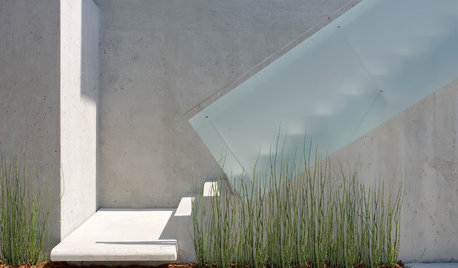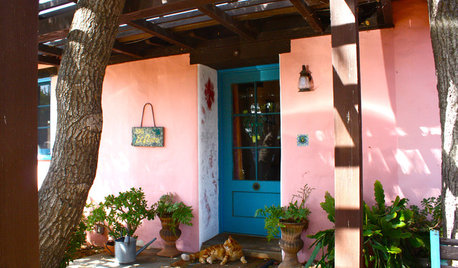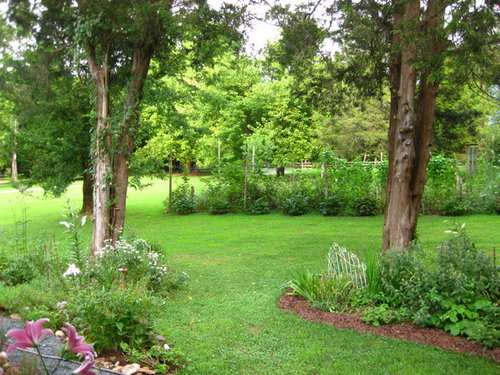Suggestions needed for pink tree-climber
sidos_house
10 years ago
Related Stories

SPRING GARDENING7 Spectacular and Practical Spring-Flowering Trees
Put on a beauteous show in the garden with a landscape tree awash in flowers — just do your homework first
Full Story
MAN SPACESWhy Men Really Do Need a Cave
Don't dismiss cars, bars and the kegerator — a man space of some kind is important for emotional well-being at home
Full Story
REMODELING GUIDESGet What You Need From the House You Have
6 ways to rethink your house and get that extra living space you need now
Full Story
LANDSCAPE DESIGNDoes Your Landscape Need a Little ‘Cosmic Latte’?
Beige — the color of the universe — can be both building block and backdrop in a contemporary garden
Full Story
BATHROOM DESIGNTickled Pink in the Bathroom
We asked you to show us your vintage pastel bathrooms — and you responded with a tsunami of photos and comments
Full Story
HOUZZ TOURSMy Houzz: Designer's Eclectic Pink California Adobe
Pink walls, red floors and colorful textiles blend with local artwork in an Ojai designer's charmingly eclectic home
Full Story
PINKThe Pink Link — Learn the Secrets of a Decorating Darling
Is it the kiss of death for masculine rooms? Can it soothe a psyche? Discover the history and theories behind this delightful color
Full Story
EDIBLE GARDENSHow to Add an Apple Tree to Your Edible Garden
Readily available, beautiful and fragrant, apple trees offer four-season interest along with crisp, juicy fruit
Full Story
GARDENING GUIDES5 Best-Behaved Trees to Grace a Patio
Big enough for shade but small enough for easy care, these amiable trees mind their manners in a modest outdoor space
Full Story










AquaEyes 7a NJ
luxrosa
Related Professionals
Maple Valley Landscape Architects & Landscape Designers · Fairhope Landscape Contractors · Lorain Landscape Contractors · Newnan Landscape Contractors · Norridge Landscape Contractors · Vadnais Heights Landscape Contractors · Glenn Heights Swimming Pool Builders · Tucson Swimming Pool Builders · Winchester Siding & Exteriors · Black Forest Siding & Exteriors · Kannapolis Siding & Exteriors · Kirkland Siding & Exteriors · Rockville Siding & Exteriors · San Diego Siding & Exteriors · Western Springs Siding & Exteriorsroseseek
sidos_houseOriginal Author
AquaEyes 7a NJ
sidos_houseOriginal Author
nickl
AquaEyes 7a NJ
ingrid_vc so. CA zone 9